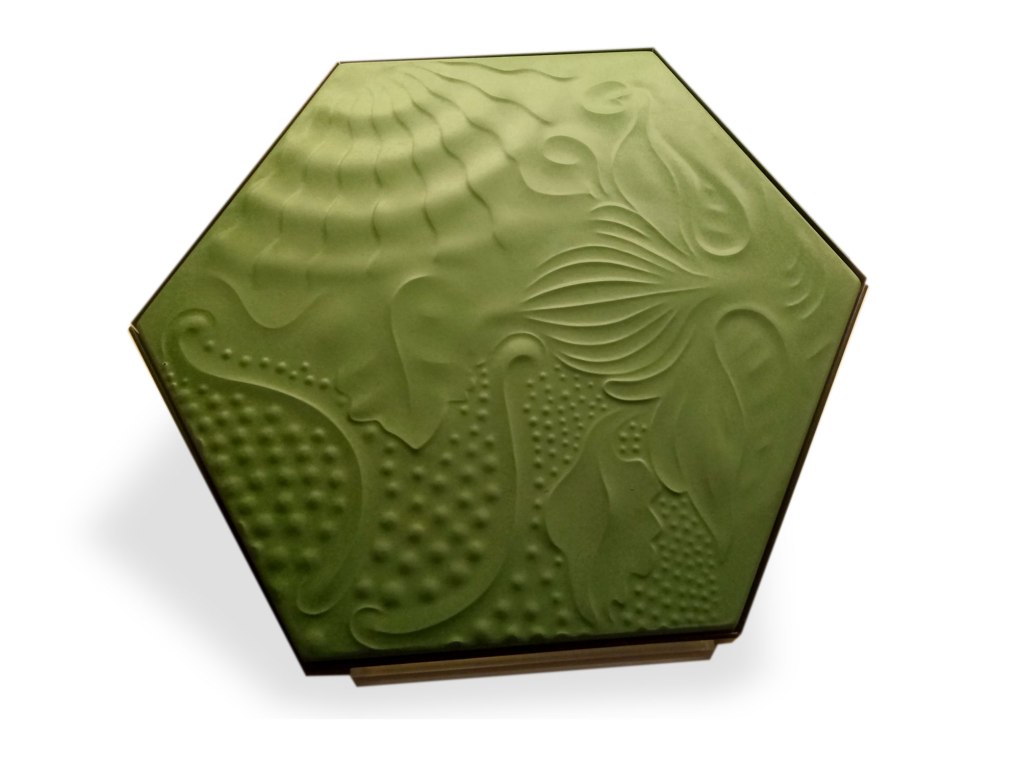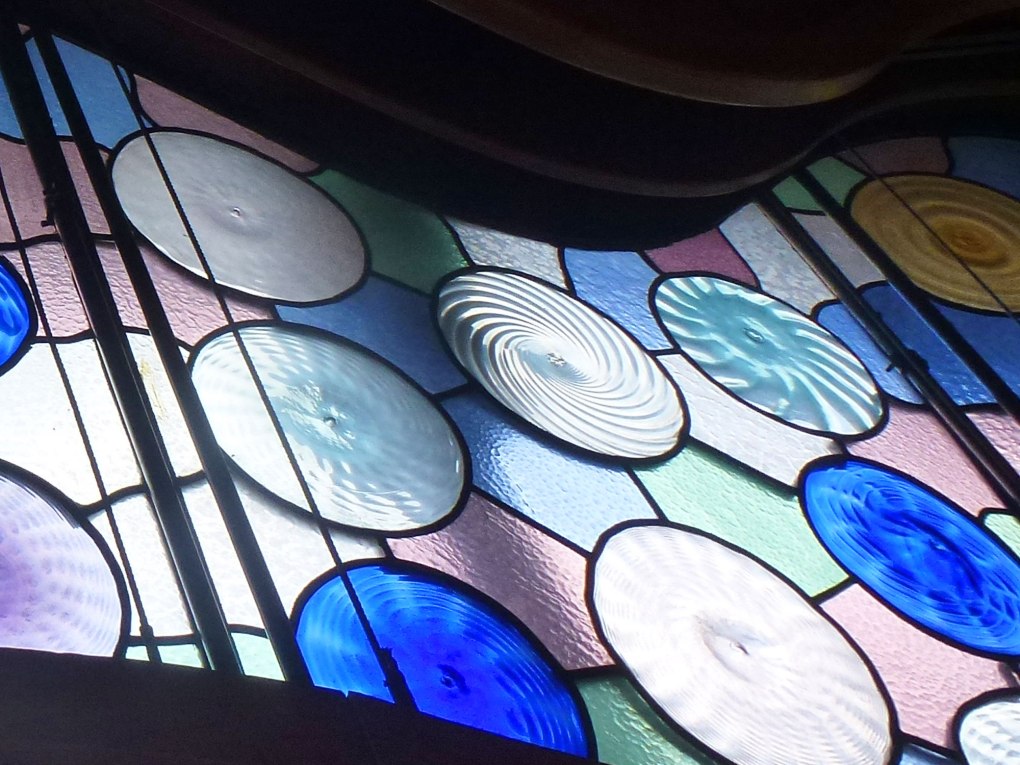Passeig de Gràcia is famous for many things – for its history and elegance, for its buildings, great restaurants and luxury shops, still this deep-blue-sea inspired pattern might be its true symbol.

The elegant boulevard is Passeig de Gràcia, and the walk is between two of the most visited houses of Barcelona, Casa Batlló and La Pedrera, and what links all three is, well, a hexagonal tile. And the fact that they were all designed by Antoni Gaudí. This walk might be the number one choice of anybody visiting Barcelona, mainstream tourist or refined traveller, newcomer or passerby, still this doesn’t make it less beautiful. On the contrary.

The hexagonal tile pattern covering Barcelona’s most famous avenue creates delicate spirals in the shapes of starfish, ammonite and algae. The design was created back in 1904 and it was supposed to be an interior flooring but today it covers the expansive sidewalks of Passeig de Gràcia avenue, all the way up from Plaça de Catalunya to els Jardinets. The tiles were originally designated for the interior of the iconic Casa Batlló. Here they would have matched plenty of other marine motifs, including the stunning aquatic-themed design of the interior patio (photos below), where walls are covered in blue tiles and the glass panels that mimic the underwater effect.


However, the hexagonal tiles were instead placed, two years later, inside the nearby La Pedrera, or Casa Milà, just a few blocks away, on the same Passeig de Gràcia.

The pattern of the floor tiles requires seven individual pieces to be laid to complete the pattern, that is to fully display each spiral created by each of the three elements – the starfish, the fossil shell and the undulating algae.

So what makes these tiles special, besides the famous name of their designer? Well, first of all, there’s a single module that generates, through rotation, a complex image – that of the three separate spiral designs and, for this reason, the tileis considered to be the first product made of industrial design and this is how it is exhibited at the MoMA in New York. Then, both the shape and the relief break with what was being commonly used in the beginning of the 20th century: these tiles are hexagonal – and not square, as shape, and use relief – and not flat colours.

The company that produces these tiles is yet another reference in the world of urban design. Escofet have a history that goes back to 1886 and have been producing all the urban pavements of Barcelona’s Eixample, including the iconic design of Flor de Barcelona. In 1976, they redesigned Gaudí’s indoor tiles for outdoor use and then paved the entire Passeig de Gràcia (60,000 square metres) in these hexagonal beauties. In 2001 another model, a smaller, thicker and non-slip version, substituted the original design. Even if the magical hue and detail of the original pieces was lost, the new design still offers plenty of relief beauty.

Gaudí has been identified with the Catalan Modernist movement and by extension with the international Art Nouveau style. His strong personality drew like-minded people – structural engineers, sculptors, and metalworkers who worked hand in hand with him to design and materialise the organic shapes in stone, wood, glass and iron. Among them, a name I consider very important to mention is that of Josep Maria Jujol (1879-1940) who worked closely together with Gaudí for Casa Batlló, La Pedrera and Park Güell – the entire colourful trencadís of the park, for instance, are entirely designed by Jujol and considered a veritable work of art. At La Pedrera, Jujol designed the wrought iron balconies and the plaster ceilings, while for Casa Batlló he worked at the main facade and for the interior furniture.

A unique voice, not easy to compare with other architects in the terms used by historians, Antoni Gaudí was also fortunate enough to have loyal clients to support him, one of them being Count Eusebi Güell, for whom he designed many projects. From early in his career, wide attention was given to his work, although the architect avoided publicity becoming almost hermit-like in later life.

Over his career the architect developed a sensuous, curving, almost surreal design style which established him as the most known name of the Catalan Art Nouveau movement. With little regard for formal order, he juxtaposed unrelated systems and altered established visual order.

His work is greatly biomimetic and this is reflected in the use of curved construction stones, twisted iron sculptures, and organic-like forms. Except for certain overt symbols of nature or religion, Gaudí’s buildings became essentially representations of their structure and materials. In parc Güell (1900-14) and then the Colonia Güell Church (1898-1915) he developed a type of structure that has come to be called equilibrated – that is, a structure designed to stand on its own without internal bracing, external buttressing, and like, simply as a tree stands. Among the primary elements of his system were piers and columns that tilt to transmit diagonal thrusts, and thin-shell, laminated tile vaults that exert very little thrust. Gaudí applied this equilibrated system to both houses located on Passeig de Gràcia: Batlló (1904-06) – a renovation that incorporated new equilibrated elements, notably the facade; and La Pedrera (1905-10) – where several floors are structured like clusters of tile lily pads with steel-beam veins. As was often his practice, he designed the two buildings, in their shapes and surfaces, as metaphors – in these cases, of the mountainous and of the maritime character of Catalonia.

In decoration terms, these houses are originally adorned with mosaic patterns, or with highly textured stained glass designs. This added another important dimension to his buildings which is so often overlooked by architects – the use of colour. The combination of original design, interestingly shaped materials and vibrant colours in Gaudí’s work give the viewer a truly breathtaking visual experience.

3 thoughts on “A metaphor of the Mediterranean sea, right under your feet”